Abstract
An intracellular bacterium was isolated from hamsters (Mesocricetus auratus) with proliferative ileitis. The organism was isolated in Intestine 407 and GPC-16 cell cultures (incubated in a microaerophilic atmosphere) from isolated and lysed epithelial cells from hamsters with proliferative ileitis. The bacterium measured 1.4 to 1.7 microns in length by 0.26 to 0.34 microns in width, was slightly curved, and had an irregular trilaminar cell wall. Inoculation of hamsters with a cell culture lysate containing the organism or a 0.65-microns-pore-size filtrate of an infected-cell lysate resulted in the typical lesions of proliferative ileitis in approximately 50% of the animals in 28 days. Hamsters inoculated with uninfected cells or a 0.2-microns-pore-size filtrate of an infected-cell lysate remained uninfected. Attempts to propagate the organism on cell-free media have been unsuccessful.
Full text
PDF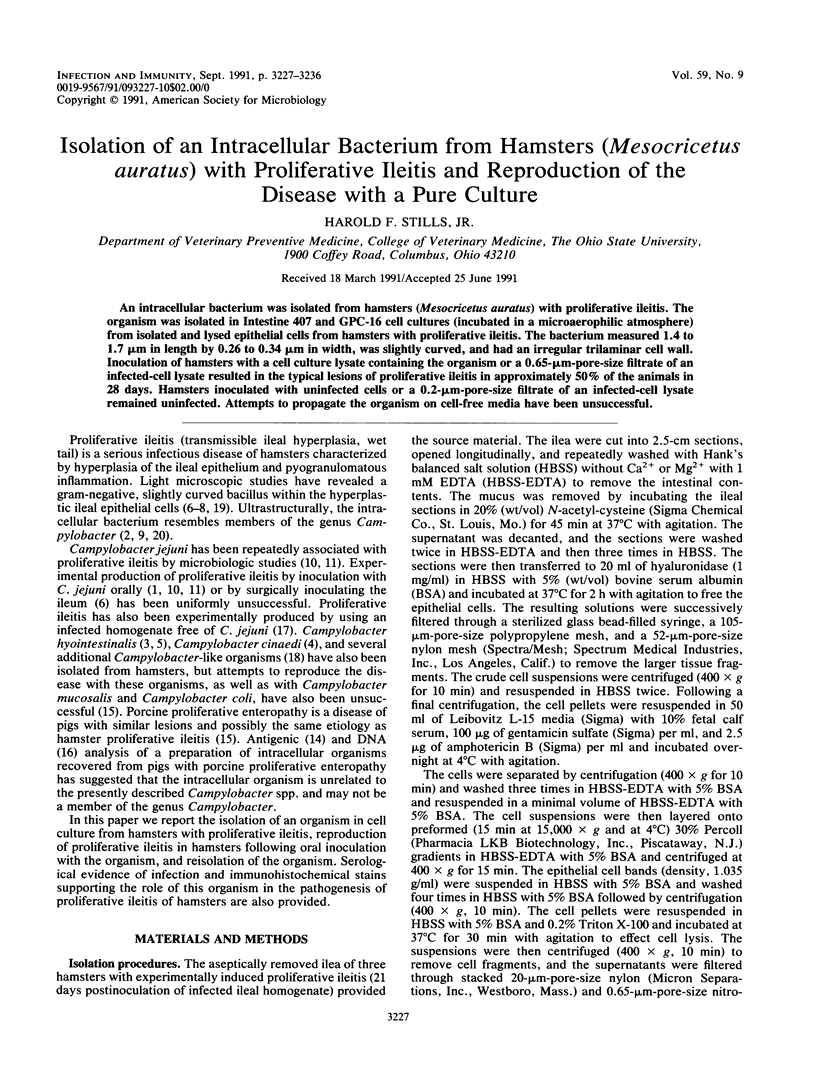
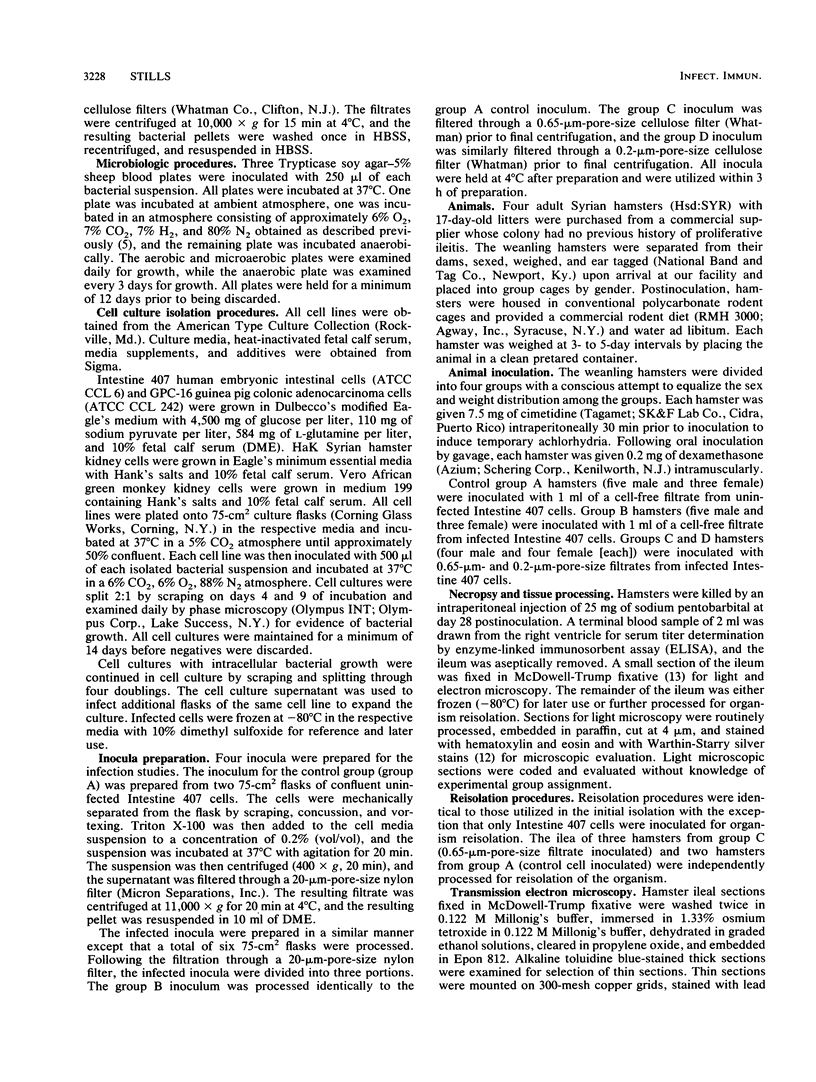
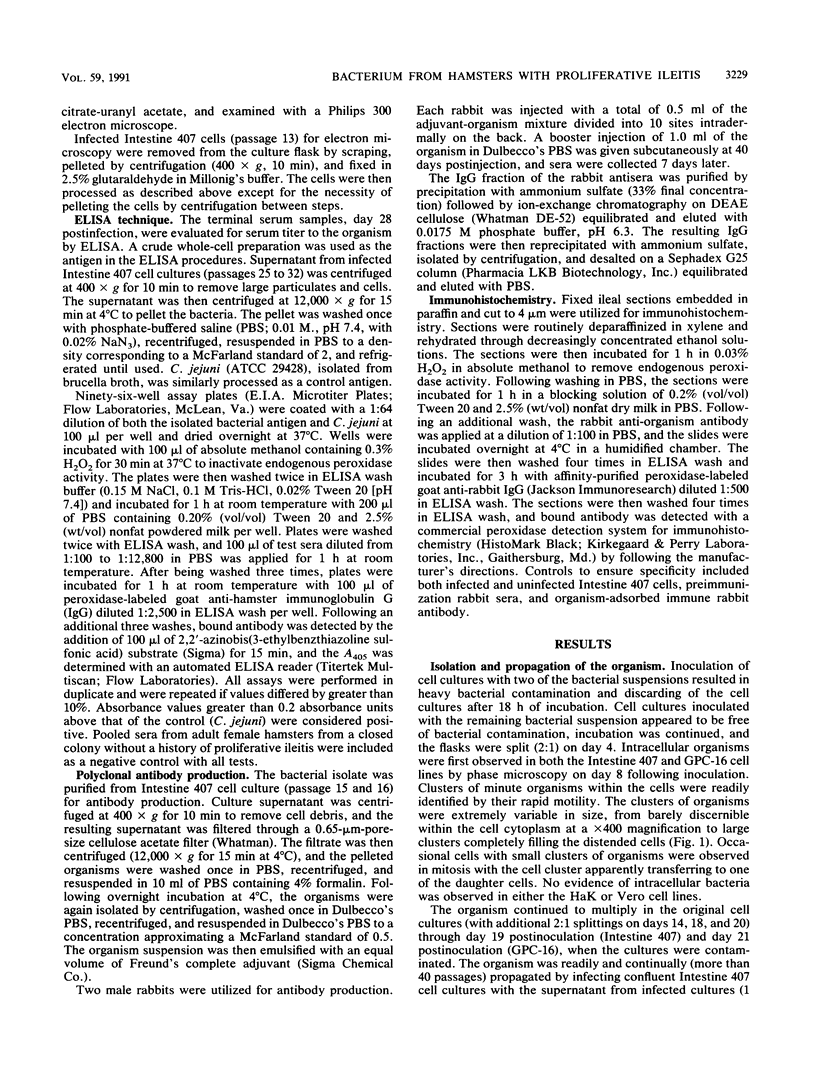
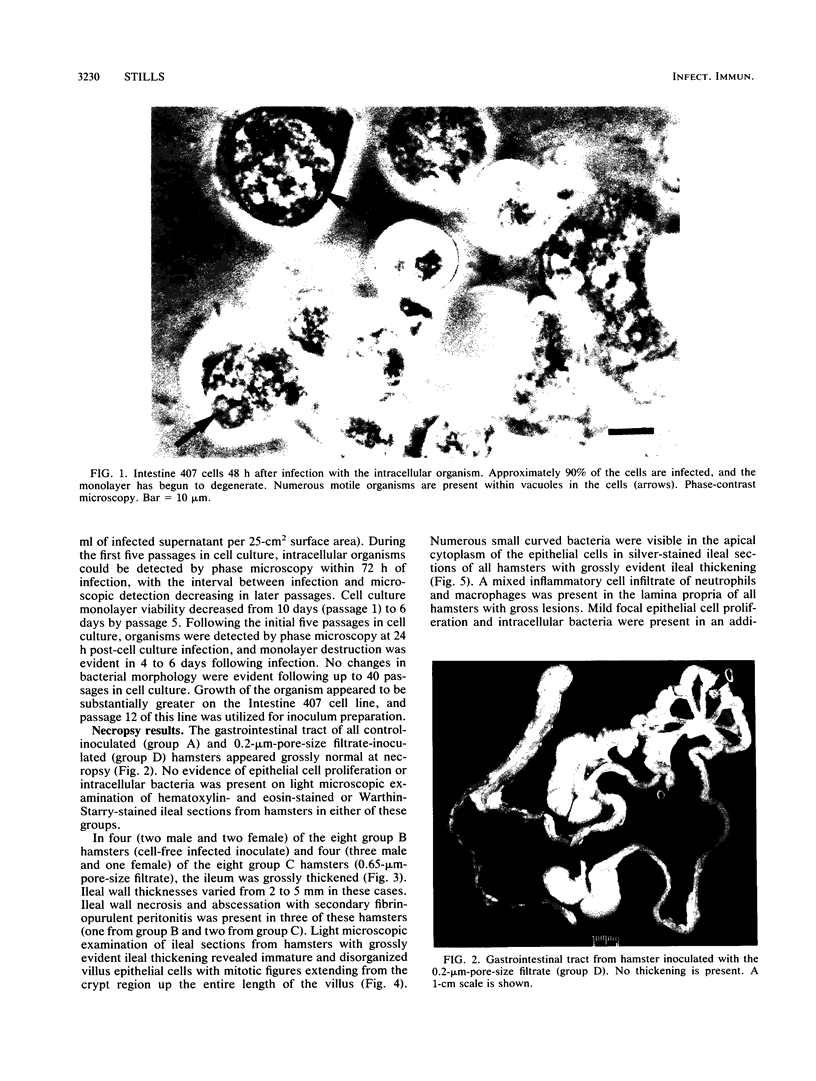
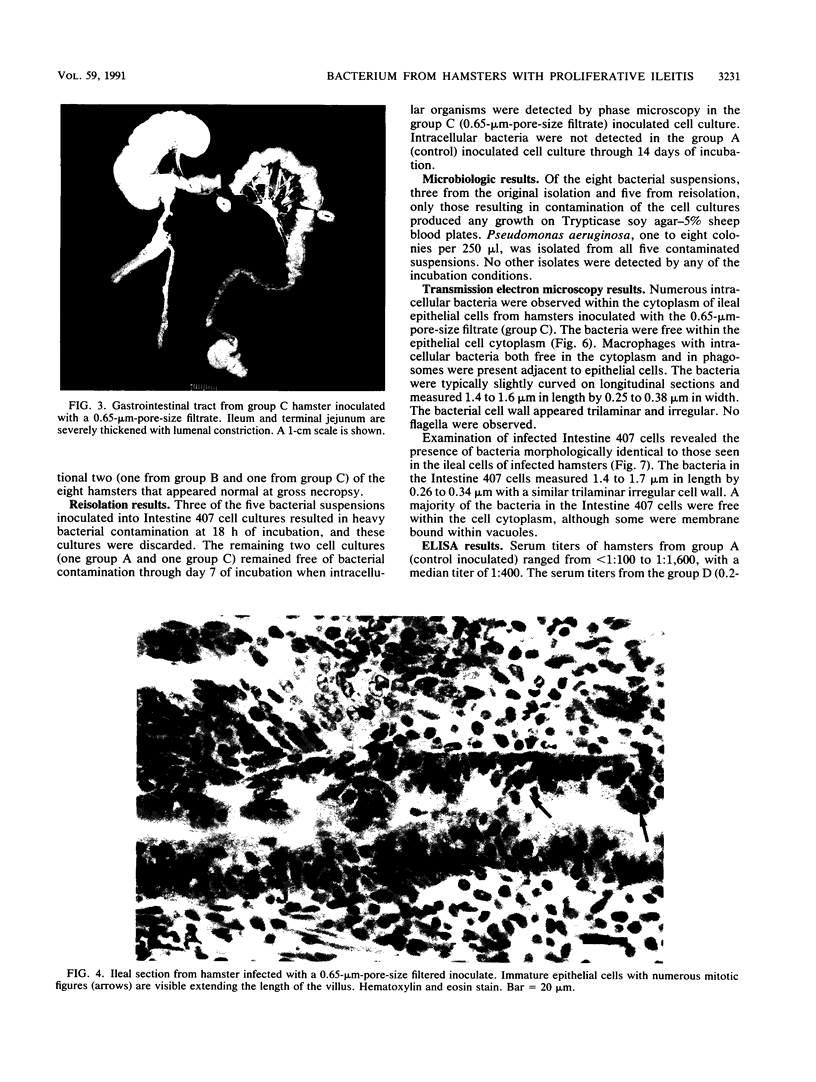
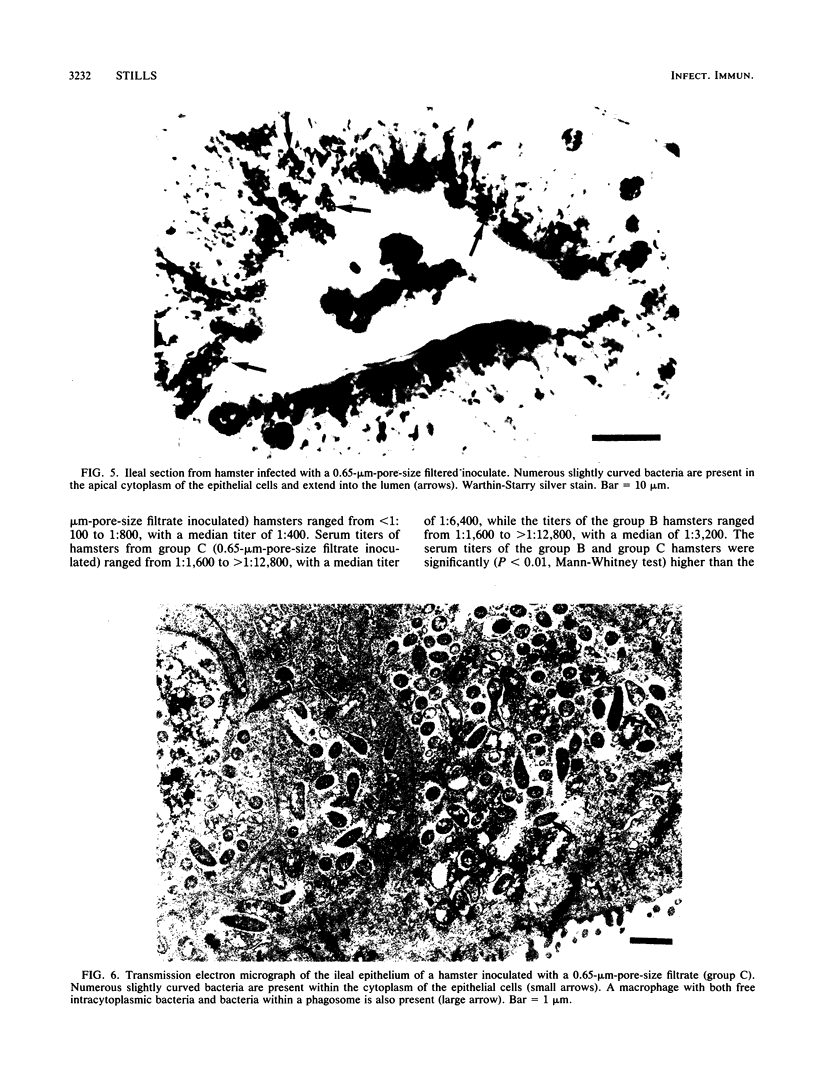
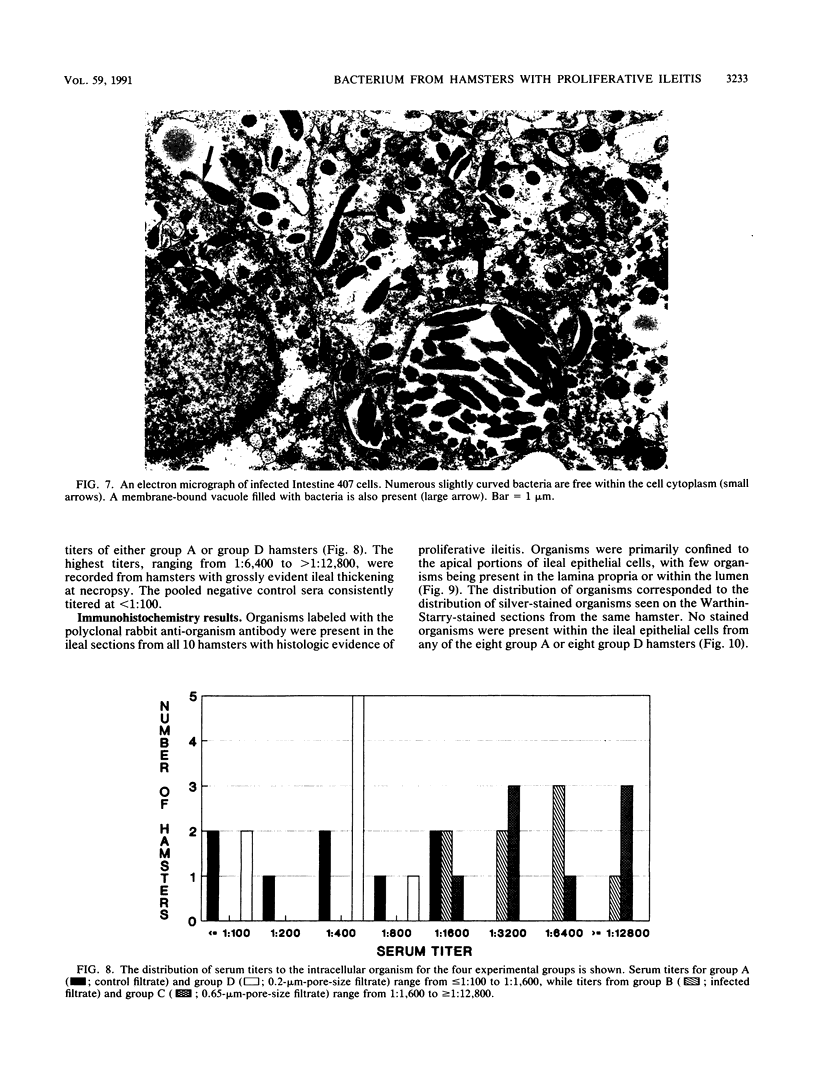
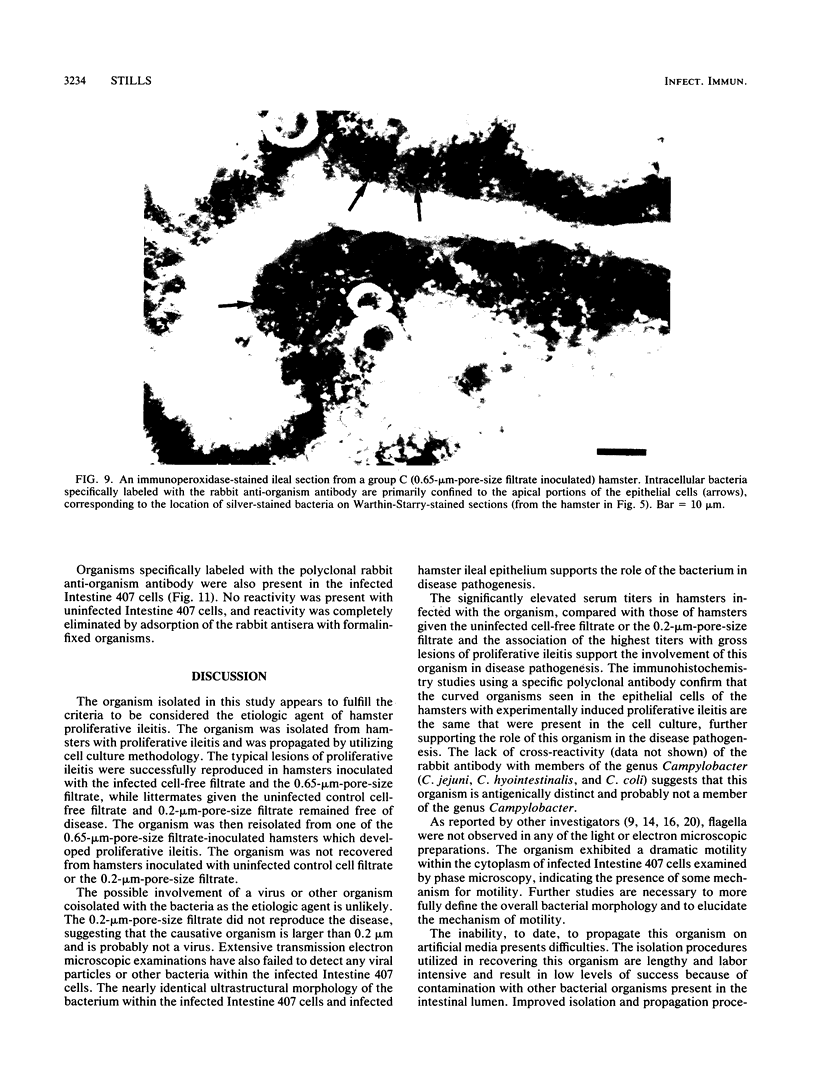
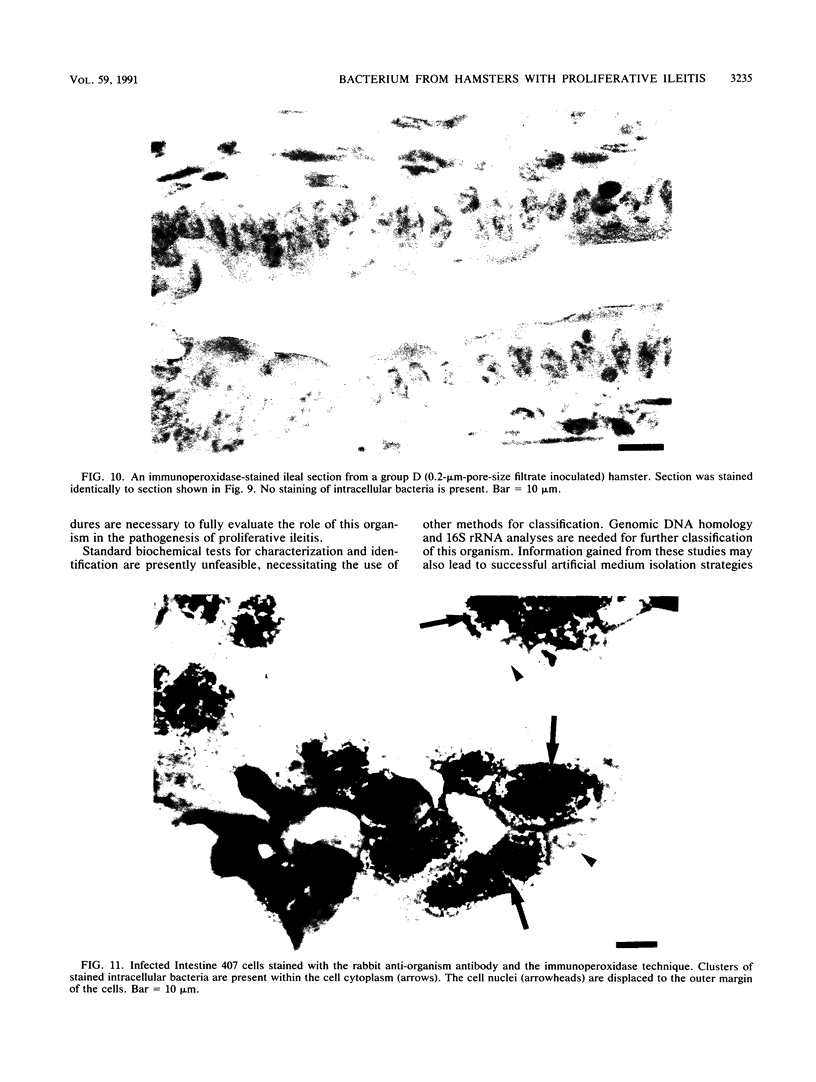
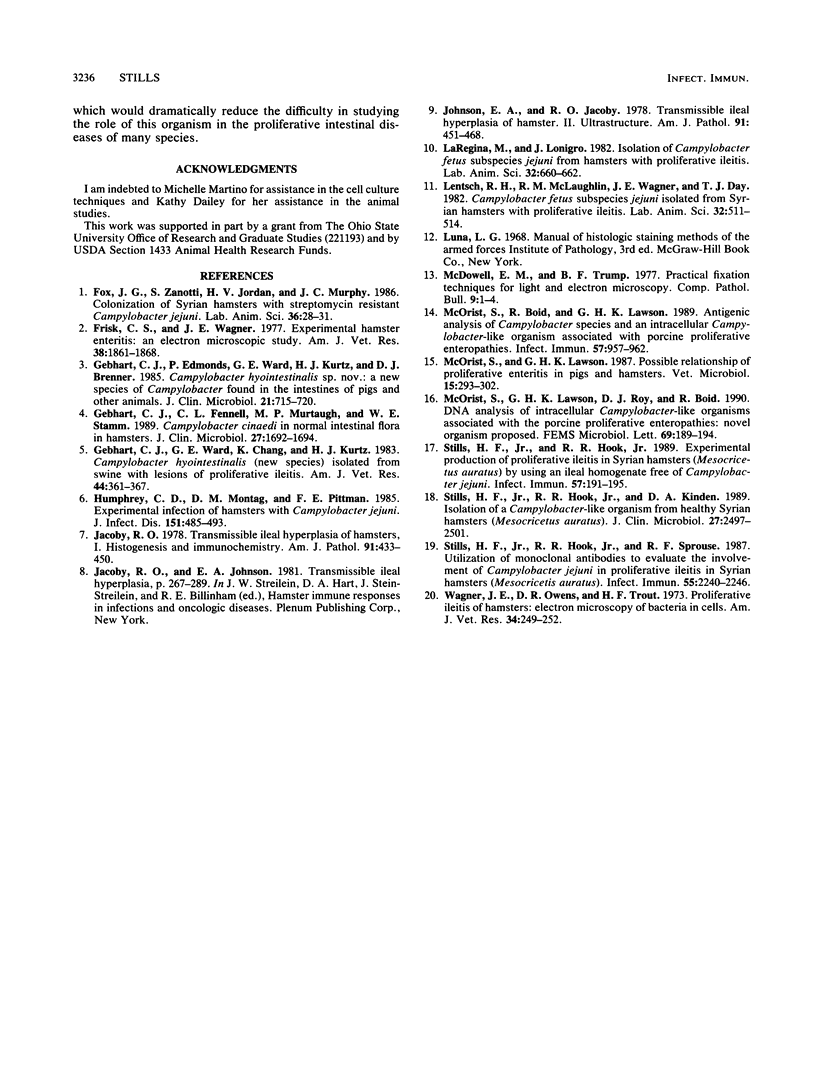
Images in this article
Selected References
These references are in PubMed. This may not be the complete list of references from this article.
- Fox J. G., Zanotti S., Jordan H. V., Murphy J. C. Colonization of Syrian hamsters with streptomycin resistant Campylobacter jejuni. Lab Anim Sci. 1986 Feb;36(1):28–31. [PubMed] [Google Scholar]
- Frisk C. S., Wagner J. E. Experimental hamster enteritis: an electron microscopic study. Am J Vet Res. 1977 Nov;38(11):1861–1868. [PubMed] [Google Scholar]
- Gebhart C. J., Edmonds P., Ward G. E., Kurtz H. J., Brenner D. J. "Campylobacter hyointestinalis" sp. nov.: a new species of Campylobacter found in the intestines of pigs and other animals. J Clin Microbiol. 1985 May;21(5):715–720. doi: 10.1128/jcm.21.5.715-720.1985. [DOI] [PMC free article] [PubMed] [Google Scholar]
- Gebhart C. J., Fennell C. L., Murtaugh M. P., Stamm W. E. Campylobacter cinaedi is normal intestinal flora in hamsters. J Clin Microbiol. 1989 Jul;27(7):1692–1694. doi: 10.1128/jcm.27.7.1692-1694.1989. [DOI] [PMC free article] [PubMed] [Google Scholar]
- Gebhart C. J., Ward G. E., Chang K., Kurtz H. J. Campylobacter hyointestinalis (new species) isolated from swine with lesions of proliferative ileitis. Am J Vet Res. 1983 Mar;44(3):361–367. [PubMed] [Google Scholar]
- Humphrey C. D., Montag D. M., Pittman F. E. Experimental infection of hamsters with Campylobacter jejuni. J Infect Dis. 1985 Mar;151(3):485–493. doi: 10.1093/infdis/151.3.485. [DOI] [PubMed] [Google Scholar]
- Jacoby R. O., Johnson E. A. Transmissible ileal hyperplasia. Adv Exp Med Biol. 1981;134:267–289. doi: 10.1007/978-1-4757-0495-2_25. [DOI] [PubMed] [Google Scholar]
- Jacoby R. O. Transmissible ileal hyperplasia of hamsters. I. Histogenesis and immunocytochemistry. Am J Pathol. 1978 Jun;91(3):433–450. [PMC free article] [PubMed] [Google Scholar]
- Johnson E. A., Jacoby R. O. Transmissible ileal hyperplasia of hamsters. II. Ultrastructure. Am J Pathol. 1978 Jun;91(3):451–468. [PMC free article] [PubMed] [Google Scholar]
- La Regina M., Lonigro J. Isolation of Campylobacter fetus subspecies jejuni from hamsters with proliferative ileitis. Lab Anim Sci. 1982 Dec;32(6):660–662. [PubMed] [Google Scholar]
- Lentsch R. H., McLaughlin R. M., Wagner J. E., Day T. J. Campylobacter fetus subspecies jejuni isolated from Syrian hamsters with proliferative ileitis. Lab Anim Sci. 1982 Oct;32(5):511–514. [PubMed] [Google Scholar]
- McOrist S., Boid R., Lawson G. H. Antigenic analysis of Campylobacter species and an intracellular Campylobacter-like organism associated with porcine proliferative enteropathies. Infect Immun. 1989 Mar;57(3):957–962. doi: 10.1128/iai.57.3.957-962.1989. [DOI] [PMC free article] [PubMed] [Google Scholar]
- McOrist S., Lawson G. H. Possible relationship of proliferative enteritis in pigs and hamsters. Vet Microbiol. 1987 Dec;15(4):293–302. doi: 10.1016/0378-1135(87)90017-4. [DOI] [PubMed] [Google Scholar]
- McOrist S., Lawson G. H., Roy D. J., Boid R. DNA analysis of intracellular Campylobacter-like organisms associated with the porcine proliferative enteropathies: novel organism proposed. FEMS Microbiol Lett. 1990 Jun 1;57(3):189–193. doi: 10.1016/0378-1097(90)90063-v. [DOI] [PubMed] [Google Scholar]
- Stills H. F., Jr, Hook R. R., Jr Experimental production of proliferative ileitis in Syrian hamsters (Mesocricetus auratus) by using an ileal homogenate free of Campylobacter jejuni. Infect Immun. 1989 Jan;57(1):191–195. doi: 10.1128/iai.57.1.191-195.1989. [DOI] [PMC free article] [PubMed] [Google Scholar]
- Stills H. F., Jr, Hook R. R., Jr, Kinden D. A. Isolation of a Campylobacter-like organism from healthy Syrian hamsters (Mesocricetus auratus). J Clin Microbiol. 1989 Nov;27(11):2497–2501. doi: 10.1128/jcm.27.11.2497-2501.1989. [DOI] [PMC free article] [PubMed] [Google Scholar]
- Stills H. F., Jr, Hook R. R., Jr, Sprouse R. F. Utilization of monoclonal antibodies to evaluate the involvement of Campylobacter jejuni in proliferative ileitis in Syrian hamsters (Mesocricetis auratus). Infect Immun. 1987 Sep;55(9):2240–2246. doi: 10.1128/iai.55.9.2240-2246.1987. [DOI] [PMC free article] [PubMed] [Google Scholar]
- Wagner J. E., Owens D. R., Troutt H. F. Proliferative ileitis of hamsters: electron microscopy of bacteria in cells. Am J Vet Res. 1973 Feb;34(2):249–252. [PubMed] [Google Scholar]












